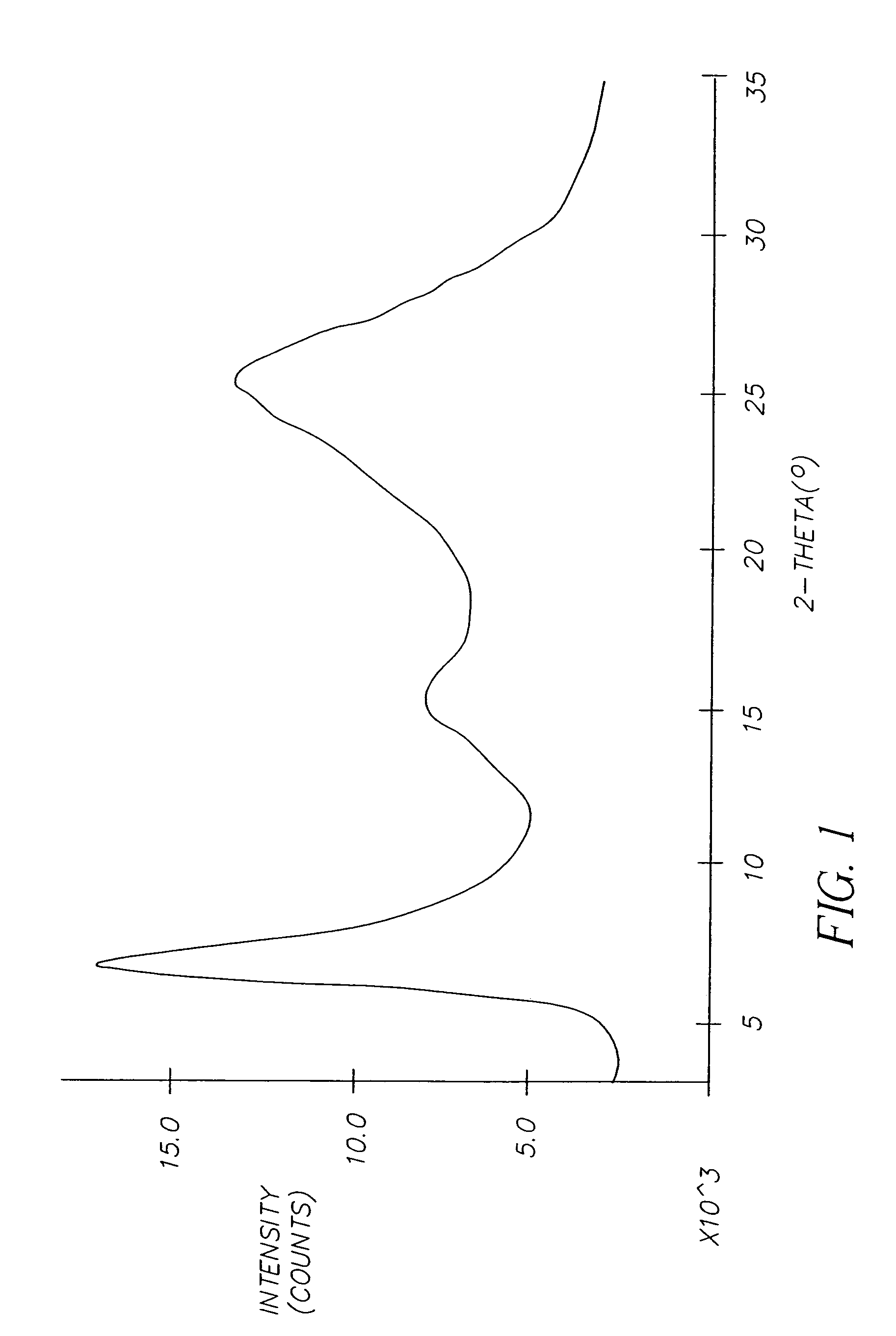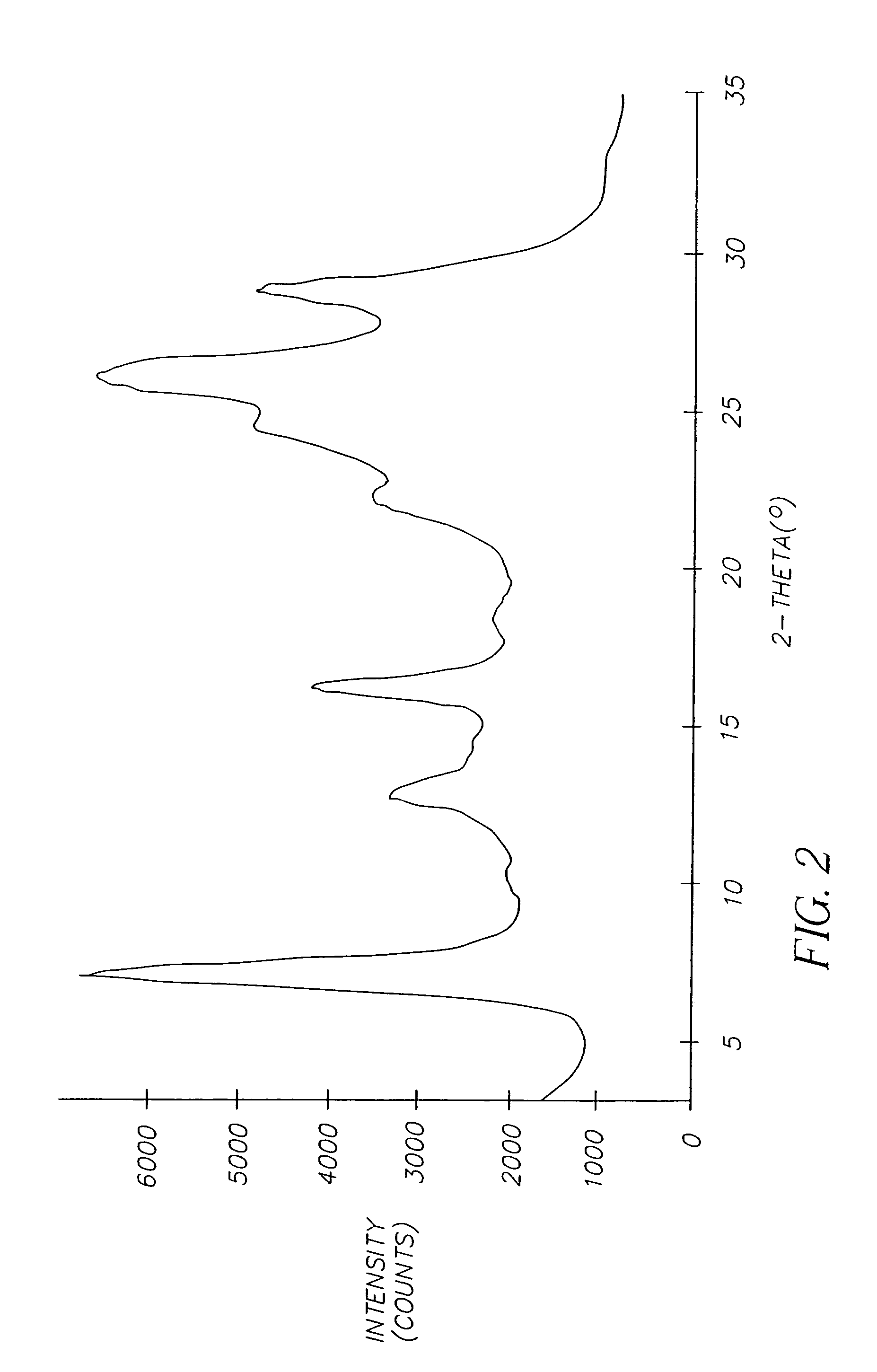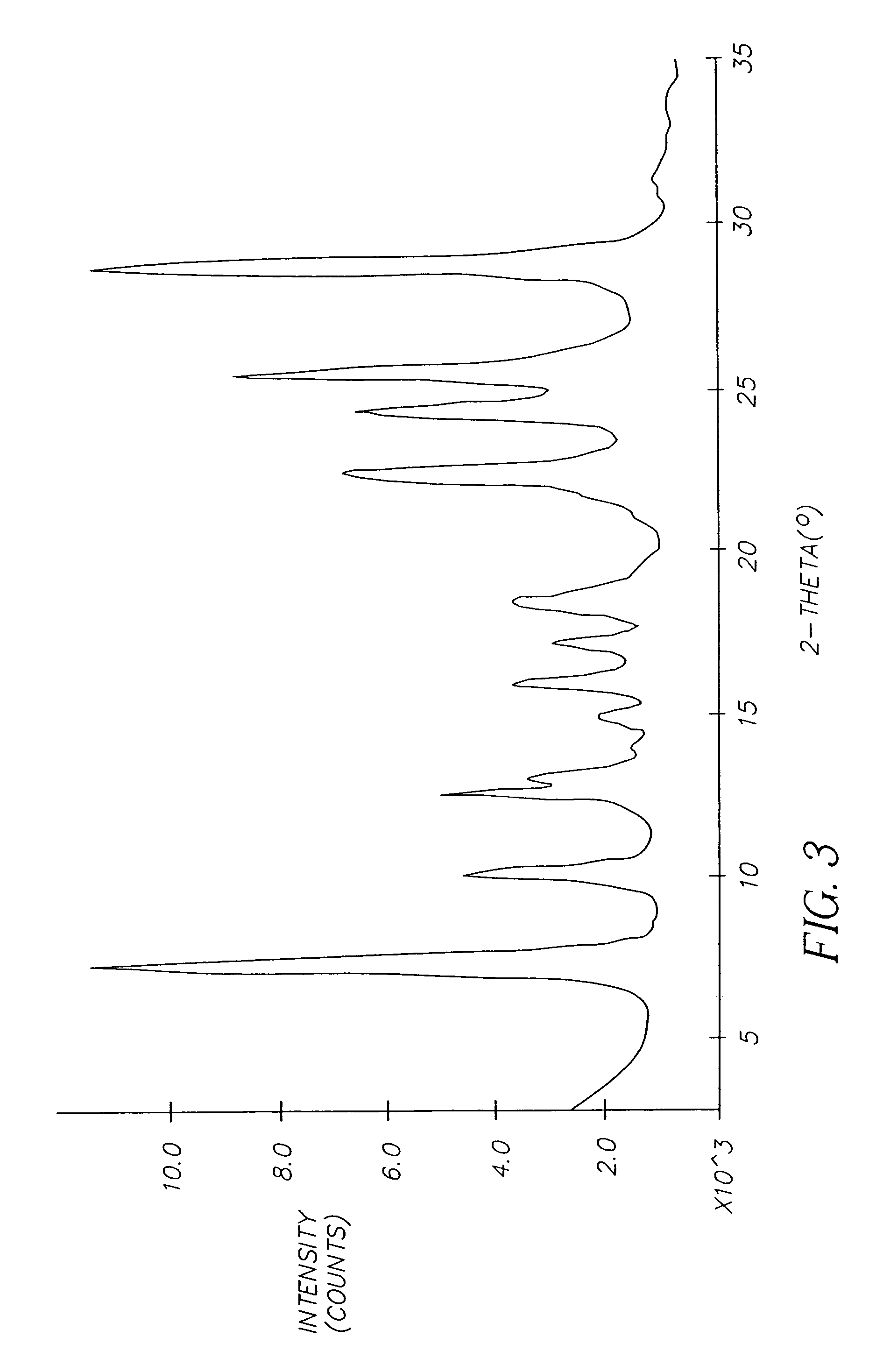Heat-induced formation of co-crystalline composition containing titanyl phthalocyanine and titanyl fluorophthalocyanine
a technology of titanyl fluorophthalocyanine and co-crystalline composition, which is applied in the field of electrotrophotographic elements, can solve the problem of a rather time-consuming process
- Summary
- Abstract
- Description
- Claims
- Application Information
AI Technical Summary
Problems solved by technology
Method used
Image
Examples
preparation 1
Crude Substantially Chlorine-Free Titanyl Phthalocyanine (TiOPc)
[0043]Phthalonitrile (1280 g), benzamide (1512.5 g), xylene (1250 ml), and pentanol (1052 g) were added in that order into a 12-liter 3-necked round-bottomed flask equipped with a temperature probe and temperature controller, a condenser, and a paddle stirrer. After the stirrer was started, titanium (IV) butoxide (838 g), and xylene (1000 ml) were added. The reaction mixture was heated to reflux (144° C.) for six hours, then cooled to 85° C., and filtered through a medium frit sintered glass funnel. The pigment was rinsed first with 4×500-ml portions of toluene and then with 4×500-ml portions of hot dimethylformamide. After an overnight soak in dimethylformamide, the mixture was heated at reflux in that solvent for one hour. The product was collected and washed with methanol and acetone, then dried at 70–80° C. overnight. Neutron activation indicated 8.6±0.02 wt. % titanium and less than 0.01 wt. % chlorine.
preparation 2
Crude Titanyl Tetrafluorophthalocyanine (TiOFPc)
[0044]Crude titanyl tetrafluorophthalocyanine was prepared as described in Preparation 2 of U.S. Pat. No. 5,614,342.
[0045]The crude TiOPc and TiOFPc pigments prepared as just described were employed in the following examples illustrating the invention.
example 1
Preparation of Amorphous TiOPc / TiOFPc 60:40 Mixture
[0046]A 1-gallon-wide mouth glass jar was filled with 9 kg of 3-mm diameter stainless steel balls, 45 g of crude TiOPc of Preparation 1, and 30 g of TiOFPc of Preparation 2, then put on a roller mill at 85 rpm. After milling of the mixture for 120 hours, 1.5 liters of water was added, and the mixture was milled for another 24 hours. After removal of the steel balls, the pigment was separated and dried at 110° C. for about 4 hours. A sample of the pigment was sent for x-ray crystallographic analysis for assessment of amorphicity. In the plot of intensity vs Bragg angle 2θ shown in FIG. 1, the three broad peaks are characteristic of an amorphized TiOPc / TiOFPc mixture.
PUM
| Property | Measurement | Unit |
|---|---|---|
| Bragg angle 2θ | aaaaa | aaaaa |
| Bragg angle 2θ | aaaaa | aaaaa |
| Bragg angle 2θ | aaaaa | aaaaa |
Abstract
Description
Claims
Application Information
 Login to View More
Login to View More - R&D
- Intellectual Property
- Life Sciences
- Materials
- Tech Scout
- Unparalleled Data Quality
- Higher Quality Content
- 60% Fewer Hallucinations
Browse by: Latest US Patents, China's latest patents, Technical Efficacy Thesaurus, Application Domain, Technology Topic, Popular Technical Reports.
© 2025 PatSnap. All rights reserved.Legal|Privacy policy|Modern Slavery Act Transparency Statement|Sitemap|About US| Contact US: help@patsnap.com



